As Hurricane Milton moves toward Florida’s Gulf Coast, people are preparing for what experts say could be the worst storm in over 100 years. With huge storm surges and strong winds expected, the region is on high alert, and evacuation orders are being issued.
Hurricane Milton is gaining strength fast, and experts warn it could be one of the most dangerous storms in recent times. Many areas are already vulnerable due to past storms, increasing the risk of widespread damage and flooding.
Evacuation orders are in place, and officials are urging people to take the storm seriously and prepare for life-threatening conditions. Safety is the main focus as the storm approaches, and the next few days will be crucial for those in its path.
### Hurricane Milton: A Record-Breaking Storm
Hurricane Milton has grown into a Category 5 storm, one of the most dangerous types on the Saffir-Simpson scale. With winds over 157 mph, it could cause massive destruction along its path.

The National Hurricane Center warns that homes could be destroyed, trees and power lines will fall, and some places might not be livable for weeks or even months. They said, “A high percentage of framed homes will be destroyed, with total roof failure and wall collapse.”

Storm surges could be especially bad, with water levels rising up to 12 feet in some areas. This could be the worst surge the Tampa Bay area has seen in nearly 100 years. Just weeks ago, Hurricane Helene caused floods with an 8-foot water surge.
Milton is expected to bring even worse flooding. While the storm may weaken to a Category 3 by the time it hits Florida, it will still be dangerous. With winds up to 129 mph, even strong homes could suffer major roof damage, and trees are likely to be uprooted.

Many are comparing Milton to past hurricanes like Irma (2017) and Betsy (1965). But what makes Milton particularly dangerous is the debris left behind by Hurricane Helene, which could worsen the damage.
### Warnings from Officials: The Call to Evacuate
As the hurricane nears, local authorities are giving strong warnings to people in at-risk areas. Tampa Mayor Jane Castor warned, “[If you] stay in one of those evacuation areas, you’re gonna die.”

She said that while past storms like Hurricane Helene were bad, Milton could bring destruction on a whole new level. Pinellas County Sheriff Bob Gualtieri echoed this, calling for the largest evacuation since Hurricane Irma in 2017.
“This is going to be bad. Everyone just needs to get out,” he said. Governor Ron DeSantis also spoke of the risks, saying, “There are areas with a lot of debris… if hit by a major hurricane, it’s going to dramatically increase damage.”

Evacuation orders are in place, and local authorities stress that those who don’t leave will be on their own when the storm hits. Many who stayed behind in past hurricanes are now taking these warnings seriously.
### Evacuation Efforts in Full Swing
With Hurricane Milton approaching Florida’s Gulf Coast, evacuation efforts are in motion. Local authorities have ordered mandatory evacuations for several coastal communities, urging people to leave before it’s too late.
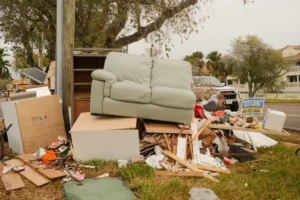
Traffic is heavy on highways as thousands of residents move inland to escape the storm. On Interstate 75, northbound lanes were packed with cars heading toward the Florida Panhandle.
Others sought shelter in places like Fort Lauderdale and Miami, which are expected to be less affected. Meanwhile, southbound lanes were nearly empty. Communities hit hard by past storms aren’t taking chances this time.
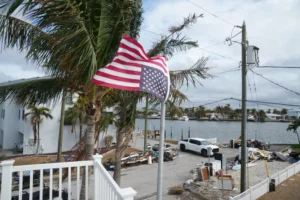
In Fort Myers Beach, a town devastated by Hurricane Ian two years ago, streets were empty as residents packed up and left, with only a few people staying behind to secure their homes.
Those who remember the severe flooding caused by Ian’s 15-foot storm surge know the danger is real and are taking steps to avoid a repeat of past tragedies.
As Hurricane Milton nears, people in high-risk areas need to know their evacuation zones and routes. The Florida Division of Emergency Management has a “Know Your Zone” tool, helping residents find their zone by entering their address.

This tool is especially important as evacuation orders continue to come for coastal areas along the Gulf Coast. Several counties are advising residents to check both their evacuation and storm surge zones.
Counties like Hillsborough, Pinellas, Manatee, and Pasco have issued immediate evacuation orders for areas most at risk. Coastal communities in these regions must evacuate quickly.
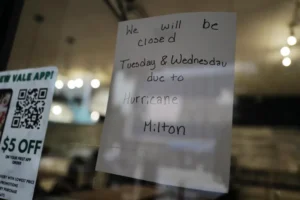
Other counties, like Polk and Highlands, don’t have mandatory evacuations but recommend sheltering in place. Sarasota, Citrus, and Hernando counties are also monitoring storm surge zones for possible evacuations.
Officials emphasize the importance of knowing your evacuation zone and finding the nearest shelters and safe routes. Those who stay may face the full force of the storm, with emergency services likely unavailable once conditions worsen.
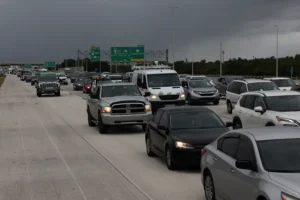
The “Know Your Zone” map offers an easy way for residents to plan their safest escape route. By using this resource and acting quickly, people can protect themselves and their families from Hurricane Milton’s potential devastation.
My Husband’s Cousin Came to Stay with Us Temporarily with Her Child – If Only I Had Known It Was All a Setup

When Derek’s cousin Daisy and her son arrive, it seems like an innocent favor. But strange comments, awkward glances, and hidden tension hint at a darker truth. Then comes the devastating revelation: Daisy isn’t his cousin, and Patrick isn’t his nephew. Shattered by betrayal and blindsided by lies, Rebecca is forced to unravel the secrets her husband tried to bury. Can trust survive a truth this explosive, or is it already too late?
When my husband told me his cousin Daisy and her son Patrick needed a place to stay for a couple of weeks, I didn’t think twice. He said they’d fallen on hard times and just needed a little help to get back on their feet.
“Of course,” I said. “Family is family.”

A woman and her son sitting on a couch | Source: Midjourney
I mean, really? Before Derek and I were married, I had financial issues, too. It had been a struggle and a half to get myself out of my study loan debt, among other things.
So, what would it say about me if I didn’t reach out to help my husband’s family?
That was a month ago. If only I knew how deeply those words would cut.

A woman sitting on a couch | Source: Midjourney
When Daisy and Patrick arrived, everything seemed fine. At first, Daisy was polite but reserved, and I chalked it up to shyness. She wasn’t particularly warm toward me, but toward Derek?
She was a different person altogether!
She was animated, laughing at his jokes and chatting like they’d known each other forever. I ignored the faint flicker of discomfort that rose in my chest.

A smiling woman | Source: Midjourney
They were family.
Right?
Patrick, though, was another story. At first, he was just an energetic eight-year-old. But within days, he turned into a whirlwind of chaos.

A little boy playing with his toys | Source: Midjourney
Crumbs littered the living room floor, sticky handprints appeared on the walls, and his toys became landmines scattered across the house.
The worst part?
He didn’t listen. I once asked him to clean up after himself, and he threw a tantrum, flinging cushions from the couch.
“You’re not my mother!” he shrieked. “I don’t listen to you!”
I finally had enough one evening.

An upset little boy | Source: Midjourney
“Patrick,” I said firmly, abandoning the light and caring attitude I wanted to initially use with him. “I need you to understand that you’re a guest here. Act properly. Behave. This isn’t your home.”
His reply made my stomach drop.
“No, Rebecca,” he said, spitting out my name. “My mom told me this is our home now.”
I stared at him, unsure if I’d heard him right.

A shocked woman | Source: Midjourney
Excuse me?
It had to be a misunderstanding, I told myself. Kids misinterpret things all the time, and Daisy probably said it to make the move easier on him.
But his words stayed with me, a tiny splinter in the back of my mind.
The real unraveling began a week later, during a casual lunch with Derek’s sister, Ashley. She’d come by to invite us to a family dinner, and the three of us were sitting outside, enjoying lemonade and plates of spaghetti. Daisy had taken Patrick for ice cream and a walk to the park.

A little boy holding an ice cream cone | Source: Midjourney
At some point, she turned to me with a warm smile.
“You’re a saint for letting them stay here, Becca,” she said.
I waved her off with a laugh, spearing a meatball with my fork.
“Stop it! It’s your family. How could I turn your cousin and nephew away? Why wouldn’t I let them stay?”

A plate of food | Source: Midjourney
Her fork froze midway to her mouth.
“Wait. So he didn’t tell you?” she gasped.
My chest tightened.
“Tell me what? Ash? Derek?”
Ashley’s eyes darted to Derek, who was suddenly very interested in his glass of lemonade.

A man sitting at a table | Source: Midjourney
“Oh, my god. Becca…” she whispered. “You really don’t know…”
“Know what?” My voice wavered as the splinter in my mind turned into a dagger.
Ashley’s face paled.
“Daisy isn’t our cousin, Becca,” she blurted out. “She’s Derek’s ex-girlfriend. And Patrick? He’s their son.”
The room tilted.

A shocked woman | Source: Midjourney
I had to grip hard onto the edge of the table to steady myself, my pulse pounding in my ears.
“What are you talking about?” I croaked, though deep down, I already knew the answer.
Ashley looked stricken.
“I thought you knew, Becca! Derek told the whole family he’d explained everything to you. Our mother told him that he had to tell you the truth before you got married. Daisy was raising Patrick with her then-boyfriend, but Derek was sending child support to them!”
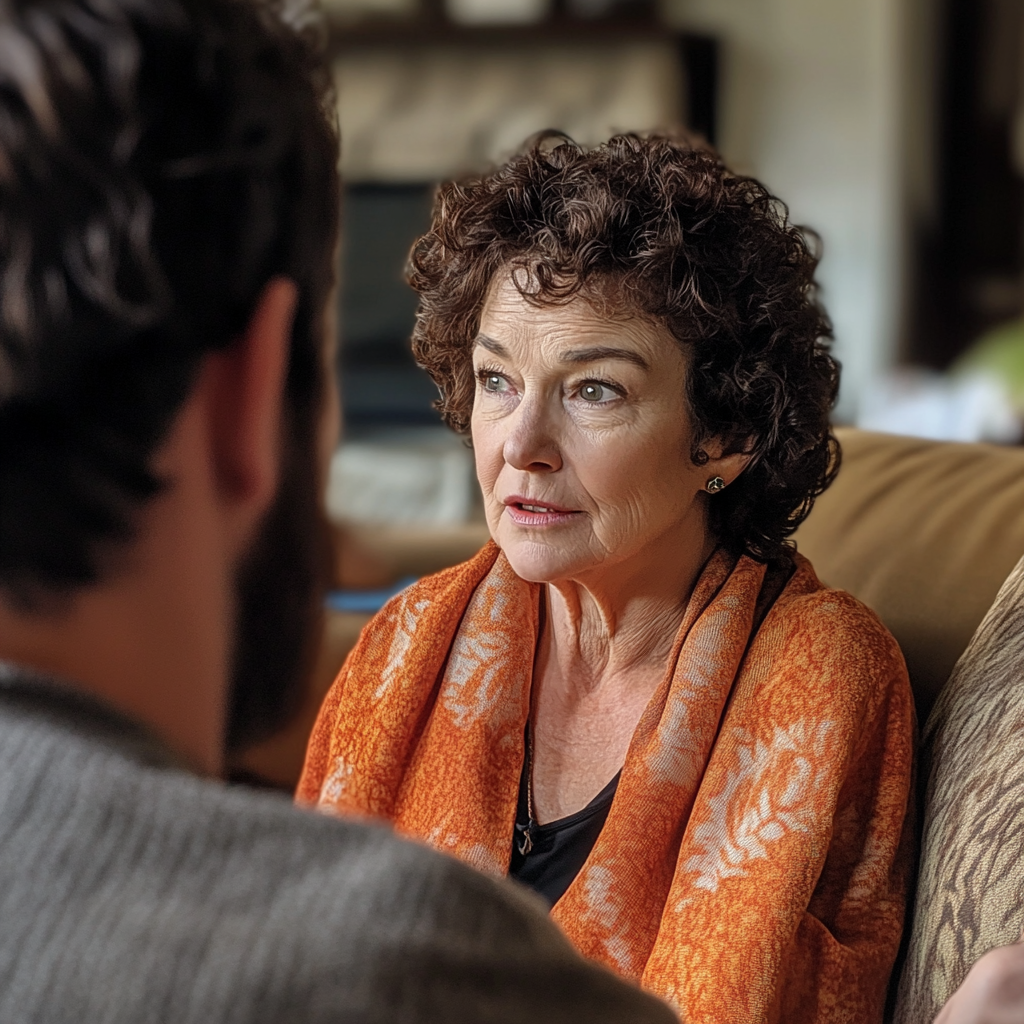
A talking older woman | Source: Midjourney
She sighed deeply, remorse filling her lungs. I knew she hated being the one to tell me.
Then, her gaze snapped to him.
“You said you told her!”
Derek didn’t meet my eyes. My stomach churned as every odd moment from the past month clicked into place.

An upset woman | Source: Midjourney
Daisy’s reserved demeanor around me, her easy laughter with Derek, Patrick’s defiant declaration. I felt like the biggest fool on earth.
I stood abruptly, my chair scraping against the floor.
“You have to get back to work. I have to clean up here and log onto a meeting. I will be at your office in two hours. And you’re going to explain everything.”
Derek’s face clouded and then cleared. He nodded.

An upset man sitting at a table | Source: Midjourney
“Fine. I’ll push my meetings, Becs,” he said, leaving.
“I’m so sorry, Rebecca,” Ashley said, picking up the empty plates. “I truly thought that Derek was a man of his word.”
“It’s not your fault, babe,” I said. “This is on him. But I need you to know that whatever happens next has nothing to do with you. Okay?”
She nodded meekly and began to wash the dishes.

A woman busy at the sink | Source: Midjourney
At Derek’s office, I waited in a small conference room, my heart still hammering. When Derek walked in, he looked like he’d aged ten years in the span of an hour.
He sat across from me, his shoulders slumped.
“Start talking,” I demanded.
He exhaled shakily, avoiding my gaze.

A conference room | Source: Midjourney
“Yes, Daisy is my ex-girlfriend,” he admitted, his voice barely above a whisper. “And Patrick is my son.”
The words hit like a wrecking ball.
“You lied to me,” I said. “You looked me in the eyes and lied. You allowed me to set up the guest room, to turn my home office into a makeshift kid’s room? You watched all of that, and you didn’t think about telling me the truth?”

A cozy guest bedroom | Source: Midjourney
“I didn’t know how to tell you, Becca,” he stammered. “It was years before we met. Daisy and I broke up before Patrick was born. I’ve always supported him financially, but I kept my distance. When Daisy reached out, she said that she needed help. And I felt obligated. That’s my son, after all.”
“Obligated?” I spat. “You lied to me about who they are! You let me believe they were your cousin and nephew! Do you have any idea how humiliating this is?”
“I know,” he said, tears pooling in his eyes. “But I was scared. I thought it would push you away. I thought it would be easier this way. I’m sorry. I’ll tell Daisy and Patrick to leave tonight if that’s what you want.”

An upset woman | Source: Midjourney
His desperation might’ve softened me on any other day, but right then, it only made me angrier.
“They should’ve left the moment this charade started. You’ve disrespected me in every way possible.”
He didn’t try to argue.
“You’re right,” he whispered. “I’ll fix this.”
The next few days were excruciating.

An upset man | Source: Midjourney
Daisy avoided me entirely, and Patrick kept to his room, his usual chaos replaced by an eerie silence.
Derek threw himself into damage control, arranging for Daisy and Patrick to move into a rental while simultaneously begging for my forgiveness.
I confronted Daisy once, though.
“Why would you go along with this lie?” I demanded, watching her make her way through my kitchen while she made a sandwich.

A woman standing in a kitchen | Source: Midjourney
She flushed with shame, almost dropping the jar of mayonnaise.
“I didn’t want to lie,” she said softly. “But Derek thought it would be easier. I’m sorry. I never wanted to cause problems.”
Her apology didn’t heal the wound, but it clarified one thing for me:
This disaster was Derek’s making.

A jar of mayonnaise | Source: Midjourney
Once Daisy and Patrick moved out, the house felt unbearably quiet.
Derek tried everything to make amends. He left me notes apologizing for his lies, attended therapy on his own, and took on every household chore without being asked.
His remorse was evident, but my trust in him had been shattered.

A man busy in the kitchen | Source: Midjourney
It took weeks of reflection, long conversations with my best friend, Sharon, and more than a few sleepless nights before I made my decision.
“Just know what you’re getting into, Becca,” Sharon said, stirring her matcha latte. “I’ll support you, of course, but please, think about it from all sides.”
One evening, I called Derek into the living room. He sat across from me, his face tense with anticipation.

A matcha latte | Source: Midjourney
“I’m not ready to forgive you, D,” I began, my voice steady. “But I’m willing to try.”
Relief washed over his face, but I held up a hand.
“This is your last chance, Derek,” I said firmly. “No more lies. No more half-truths. If you want this marriage to survive, you have to earn back my trust.”
“I will,” he said, his voice thick and heavy. “I promise.”

A woman sitting on a couch | Source: Midjourney
Rebuilding our marriage won’t be easy, and part of me wonders if it’s even possible.
But for now, I’m taking it one day at a time. I’ve learned one thing through all of this. Trust isn’t something you can take for granted.
It’s fragile.
As for Derek? He’s on thin ice. And if he thinks I’ll ignore the warning signs ever again, he’s dead wrong.
So now, I have to figure out how to be a stepmother.

A close up of a couple | Source: Midjourney
If you’ve enjoyed this story, here’s another one for you. When Alicia and Matt’s Christmas holiday trip to Jamaica is canceled due to his father’s open-heart surgery, they decide that spending time with the family is more important. Weeks later, Nancy, Matt’s mother, promises the couple a gift… only to take it back later and replace it with something unexpected.
This work is inspired by real events and people, but it has been fictionalized for creative purposes. Names, characters, and details have been changed to protect privacy and enhance the narrative. Any resemblance to actual persons, living or dead, or actual events is purely coincidental and not intended by the author.
The author and publisher make no claims to the accuracy of events or the portrayal of characters and are not liable for any misinterpretation. This story is provided “as is,” and any opinions expressed are those of the characters and do not reflect the views of the author or publisher.



Leave a Reply